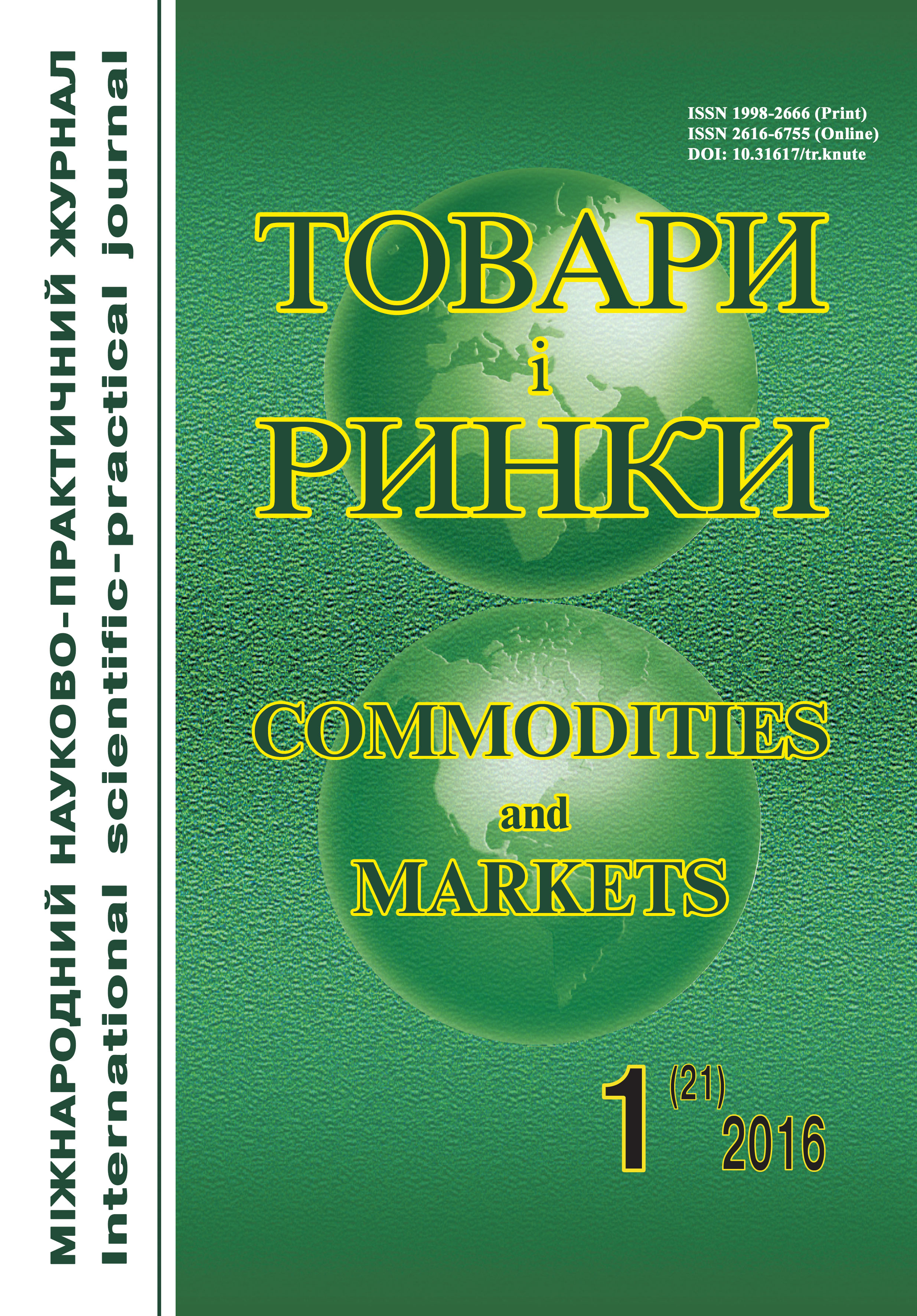Сonsumer characteristics of butter with seaweed
Keywords:
butter, functional ingredients, laminaria, fucus, сystoseira, spirulina, iodine, selenAbstract
Background. Deformation of food intake in Ukraine resulted in low consumption of biologically active ingredients (native protein, complex carbohydrates, vitamins and minerals), which causes a reduction in the overall resistance of the human body to adverse environmental factors.
The aim of the work is justification of fillers usage, biologically active additives with seaweeds (laminaria, fucus, spirulina, cystoseira) in the prescription composition of butter and identification of consumer properties of butter with these fillers.
Material and methods. Object of the research is butter with seaweed fillers in the amount of the additives laminaria and fucus – 4.0 %; spirulina – 3.0 %; and 3.5 % of cystoseira per 100 gram of the product.
The dairy butter Buterbrodne with no fillers under the same processing technology was used as a control one.
Organoleptic assessment of the control and experimental samples of butter has been carried out according to the twenty-grade scale in accordance with DSTU 4399:2005 and was improved by us according to the quality rating scale.
Results. Microelement content of the diary butter with fillers includes iodine and selenium in the amounts exceeding 10 % of the adequate level of consumption of these ingredients. Thus, according to the content of iodine and selenium the samples of the dairy butter are the product of functional use and may be recommended for consumption both for prevention and in case if there is a lack of iodine and selenium in the diet.
Conclusion. The dairy butter with fillers from the seaweeds has higher organoleptic characteristics thanks to the taste and consistence improvement, and can be recommended to treat iodine deficient condition and increase antioxidant properties of the human body by the means of availability of selenium.
References
Smoljar V. I. Stan faktychnogo harchuvannja naselennja nezalezhnoi' Ukrai'ny / V. I. Smoljar // Problemy harchuvannja. — 2012. — № 1—2. — S. 5—9.
Korzun V. N. Harchuvannja v umovah shyrokomasshtabnoi' avarii' ta i'i' naslidkiv / V. N. Korzun, V. I. Saglo, A. N. Parac // Ukr. medychnyj chasopys. — 2002. — № 6 (32). — S. 99—105.
Korzun V. N. Vymogy do jakosti harchuvannja naselennja v umovah ekologichnogo neblagopoluchchja / V. N. Korzun // Ekologichnyj visnyk. — 2006. — № 6 (40). — S. 10—14.
Bol'shova O. V. Mikroelementy ta zdorov’ja dytyny: deficyt essencial'nyh mikroelementiv u ditej i pidlitkiv (suchasnyj stan problemy) / O. V. Bol'shova. — Rezhym dostupu : http://medstrana.com/articles/3262.
Kaz'myn V. D. Morskye sokrovyshha / V. D. Kaz'myn. — M. : Pyshhevaja prom-st', 1999. — 138 s.
Rashevs'ka T. O. Rozrobka novogo vydu vershkovogo masla z krioporoshkom burjaku / T. O. Rashevs'ka, G. O. Simahina, V. P. Andrushenko : tezy dop. nauk.prakt. konf. ["Naukomistki tehnologii' podvijnogo pryznachennja"], (Kyi'v, 19—21 kvit. 1994 r.). — K. : NUHT, 1994. — S. 147.
Rashevs'ka T. O. Vershkove maslo "Pektynove" funkcional'nogo pryznachennja / T. O. Rashevs'ka // Molochna prom-st'. — 2005. — № 7 (22). — S. 34—36.
Vasheka O. Perspektyva vykorystannja roslynnyh harchovyh dobavok dlja vyrobnyctva molochnyh produktiv funkcional'nogo pryznachennja / O. Vasheka, T. Rashevs'ka // Produkty i ingridienty. — 2005. — № 11. — S. 67—68.
Ispol'zovanie tykvennogo masla v sostave kombinirovanyh slivochnyh past / [V. N. Dykan', L. A. Ryl'skaja, E. V. Shherbakova i dr.] // Syrodelie i maslodelie. — 2001. — № 5. — S. 33—36.
Vyshemirskij F. A. Assortiment slivochnogo masla v sootvetstvii s zaprosom vremeni / F. A. Vyshemirskij, E. V. Topnikova, E. F. Kaneva // Molochnoe delo. — 2008. — № 10. — S. 34—36.
Pat. u201412928. Vershkove maslo z napovnjuvachem / Ochkoljas O. M., Lebs'ka T. K., Tyshhenko L. M. ; zajavnyk i patentovlasnyk Nac. un-t bioresursiv i pryrodokorystuvannja Ukrai'ny. — № 98486 ; zajavl. 03.12.14 ; opubl. 27.04.15, Bjul. № 8.
DSTU 4399:2005. Maslo vershkove. Tehnichni umovy. — Chynnyj vid 2006—07— 01. — K. : Derzhspozhyvstandart Ukrai'ny, 2006. — 12 s.
Shiraishi K. Simultaneous Multielement Analysis of Diet Samples by Inductively Coupled Plasma Mass Spectrometry and Inductively Coupled Plasma Atomic Emission Spectrometry / K. Shiraishi, J. F. McInroy, Y. Igarashi // J. Nutr. Sci. Vitaminol. — 1990. — Vol. 36. — Р. 81—86.
Sun D. Determination of Thirteen Common Elements in Food Samples by Inductively Coupled Plasma Atomic Emission Spectrometry: Comparison of Five Digestion Methods / D. Sun, J. K. Waters, T. P. Mawhinney // J. AOAC Int. — 2000. — Vol. 83. — Р. 1218—1224.
Drobot V. Taka vodorost' – zostera / V. Drobot, І. Sitnik, V. Korzun // Harchova і pererobna prom-st'. — 2001. — № 5. — S. 12.
Rustambekova S. A. Mikrojelementozy i faktory jekologicheskogo riska / S. A. Rustambekova, T. A. Baraboshkina. — M. : Logos, 2006. — 112 s.
Onishhenko G. G. Racional'noe pitanie. Rekomenduemye urovni potreblenija pishhevyh i biologicheski aktivnyh veshhestv / G. G. Onishhenko. — Rezhim dostupa : http://www.businesspravo.ru/Docum/DocumShow_DocumID_97295.html.



